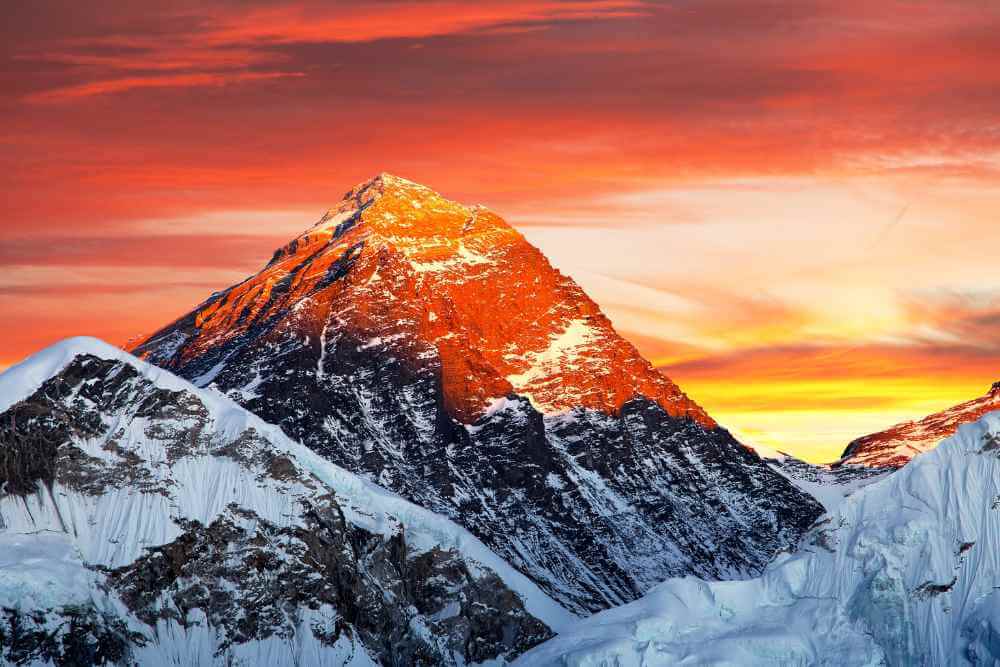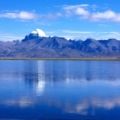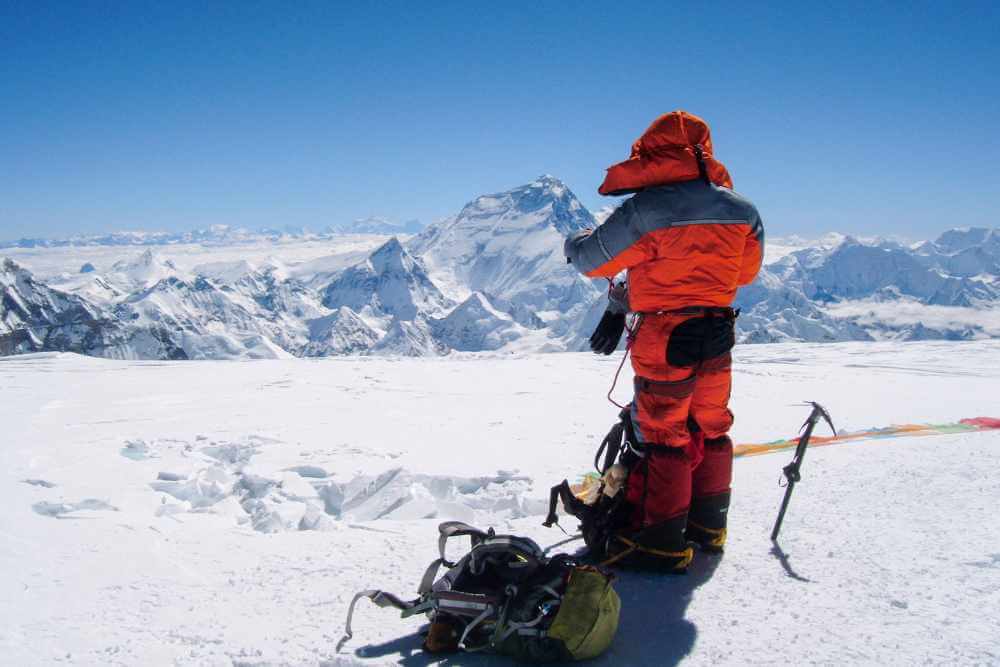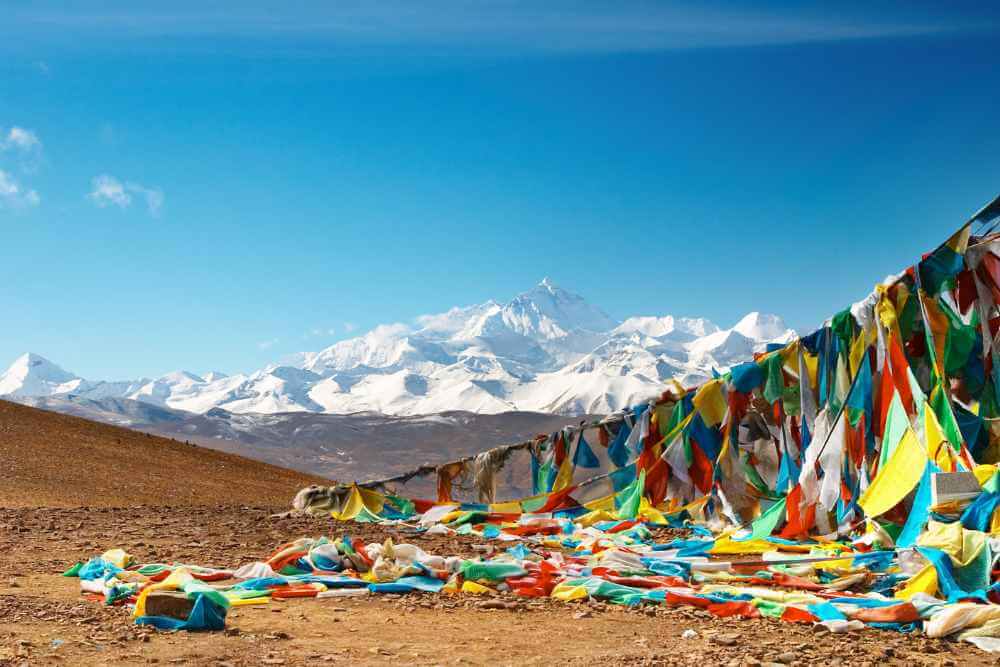Mt. Everest is the highest mountain in the world, not only a geographical landmark but also an image of human success and the magnificence of nature. This giant mountain attracts tourists across the world and people dream to reach the top of this mountain. Throughout this extensive guide, we go to the grandest of mountains, Mount Everest, and we cover where it is, the height of the mountain, its cultural importance, and notable events in the history of the mountain.
What is the Location of Mount Everest?
Mount Everest is located in the sub range of the Greater Himalaya- Mahalangur Himal. Its precise position is 27 59 17N 86 55 31E. The mountain lies between two countries Nepal and Tibet, an autonomous region of China. Although mount everest is mostly known to be in Nepal because it is so close to the town of Lukla and other trekking routes that are very popular that are leading up to the base camp, it is imperative to note that a part of the mountain is also in the country of China. This special status transforms Mount Everest into a common natural miracle that results in the transnational cooperation and international acceptance.
Does Mount Everest belong to India?
Although it is likely that many people might have an image of Mount Everest located in such nearby countries as India it is necessary to explain that the entire Mount Everest is not located in the territory of India. The mountain is situated about 140 kilometers (87 miles) north-northwest of Kathmandu the capital city of Nepal, and 335 kilometers (208 miles) southwest of Lhasa, the capital city of Tibet. Nevertheless, Mount Everest is fairly near the Indian state of Sikkim that borders Tibet. Nevertheless, though this close to Nepal, Mount Everest is still under the jurisdiction of Nepal and China and therefore it is considered a national pride of both nations.
What is the Height of Mount Everest?
Since its discovery, Everest’s height has fascinated scientists and explorers. The first official measurement in 1841, led by Sir George Everest, estimated the height at 8,840 meters (29,002 feet).
After multiple surveys and advancements in GPS technology, the most recent joint measurement by Nepal and China in 2020 confirmed the official height as:
8,848.86 meters (29,031.7 feet)
This precise measurement cements Everest’s status as the tallest mountain in the world, towering over all others and continuing to be a benchmark for scientific and adventure-based achievements.
What Does Mount Everest Mean?
The name Everest is quite rich in history during the British colonial period. The mountain was initially a local name as the Nepalese referred it to as Sagarmatha meaning Forehead in the Sky, and the Tibetans referred it to as Chomolungma, which means Mother Goddess of the World. The names of the mountains symbolize deep respect and spiritual importance that the mountain has among local cultures.
The Royal Geographical Society renamed the mountain to its modern name: Mount Everest in 1865. It is named after Sir George Everest, a Welsh surveyor who surveyed the Indian sub continent during the early 19th century. Although the world has adopted this name, most people still call the mountain by its traditional names since the local people have strong cultural connections with the beautiful environs.
Historic Ascents of Mount Everest
The first man to have climbed Mount Everest
New Zealander Edmund Hillary and Nepalese Sherpa Tenzing Norgay were the first people to reach the top of Mount Everest on May 29, 1953. This was a historic conquest that would end years of preparations and training of a team of climbers and support personnel. Hillary and Norgay belonged to the ninth British attempt at the summit, which was headed by John Hunt. Human perseverance and teamwork made their achievement possible and in turn captured the imagination of millions of people all over the world and motivated many others to go after their dreams.
First Women Up Mount Everest
On May 16, 1975, Junko Tabei, a Japanese mountain climber, became the first woman to climb to the top of Mount Everest. The trip of Tabei was characterized with incredible determination and resilience. She had to face many obstacles such as bad weather conditions and altitude sickness in order to become the first female to climb Everest. Her achievement opened a new era of women climbers and proved that sex should not be a priority in the quest of individual and career objectives.
Tabei achieved her success especially considering the norms of the society in which she lived. Being a part of the first all-female climbing group, she met skepticism and doubt by many who wondered whether women are strong enough to meet the physical and mental demands of the journey. Nevertheless, Tabei did not give up on her dream, and her persistence broke the voices of those who did not think she could make it a reality; it has since served as a strong example to women in extreme sports and otherwise.
Cultural and Spiritual Significance of Everest
In addition to its height and its attractiveness to climbers, Mount Everest has a great cultural value to the local people. The Sherpas, famous mountaineers and guides used the mountain with a lot of spiritual significance. They are of the opinion that the summit is a window to heaven and it is a custom to make prayer and rituals before making climbs. Their close knowledge of the terrain and the invaluable assistance given by the Sherpas are other things that make expedition successful.
In the same way, Tibetans perceive Mount Everest as the holy place, since they think that it is the home of gods. Circumambulation by pilgrims Pilgrims will go to great lengths to circumambulate the mountain in an attempt to seek blessings and purification of the soul. These customs emphasize the strong relationship between the mountain and the local cultures showing how nature and spirituality come together in a striking manner.
Environmental Impact and Conservation Efforts
There is concern about environmental degradation as tourism and climbing activities around Mount Everest keep rising. It is of serious ecological hazards to collect accumulation of waste, such as discarded gear and human excrement. Local governments and institutions have reacted and put in place measures to curb these problems. As an example, Sagarmatha Pollution Control Committee (SPCC) has a waste management program, which collects and processes the trash left by climbers and visitors. These activities play an important role in maintaining the natural beauty of the mountain to the future generation.
Conclusion: Everest as a Natural and Human Icon
Mount Everest is a reminder of the greatness of nature and the strength of man. Its importance can hardly be overestimated regardless of which perspective one is going to consider it as the element of geography, culture, or adventure. As we go further and enjoy this magnificent peak, we must remember to do so in a responsible manner since we are aware that we must ensure that we leave the peak in its glory so that others can enjoy it in the future.









